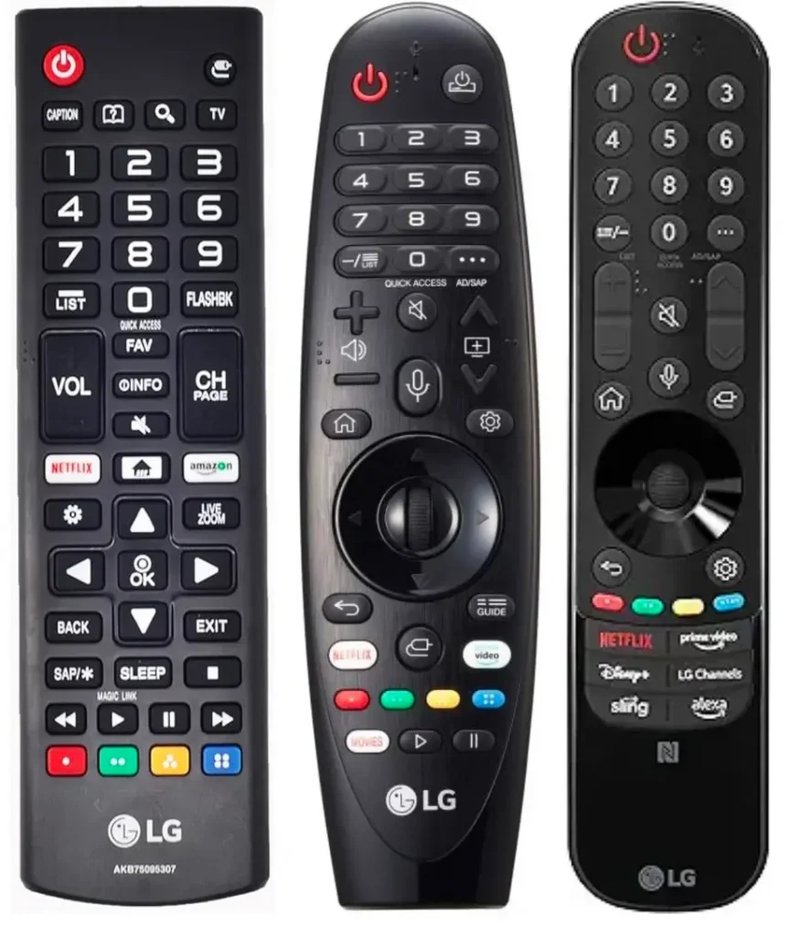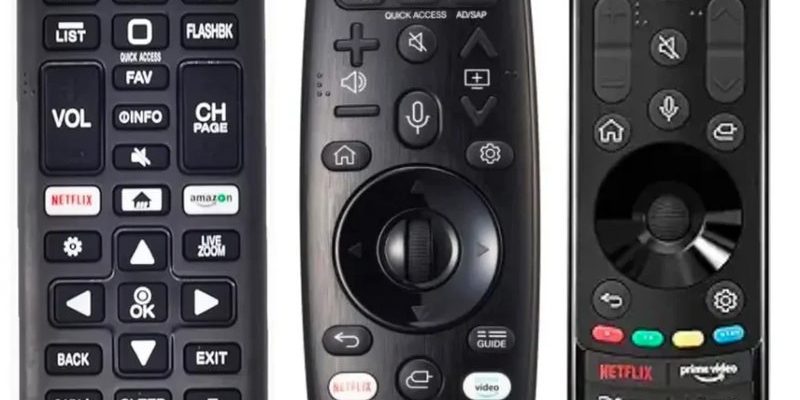
I’ll walk you through everything I’ve learned about pairing LG projector remotes with smart TVs — with all the messy reality included. Whether you’re hoping to cut down on remote clutter or just curious if that extra clicker in your drawer is any use, let’s unravel the mystery together without any tech jargon headaches.
Understanding LG Projector Remotes: What Makes Them Tick?
Let me explain something most folks don’t realize: not all remotes are created equal. LG’s projector remotes are designed to control specific projector models — and sometimes, only LG-branded ones. They have buttons mapped for projector-specific features, like adjusting the screen size or flipping between HDMI inputs, that regular TV remotes wouldn’t dream of.
Under the plastic hood, most LG projector remotes use *infrared signals* (IR), though some newer ones may rely on Bluetooth for pairing or special functions. The catch? Infrared remotes need a direct line of sight (think: pointer magic), while Bluetooth can work from behind the couch. If your smart TV is an LG and uses IR, you’re halfway there. But if it’s a different brand or uses a totally different code set, the remote might just be sending signals into the void.
Truthfully, the specific *model number* on your remote matters. LG tweaks their remote codes more often than you’d think, and what works for one product line might be utterly silent with another. So before going wild pressing buttons, check if you’ve got an “LG Magic Remote” (Bluetooth) or a classic IR clicker. Each type handles compatibility a little differently.
Smart TVs and Remote Compatibility: The Basics
Here’s where it gets interesting: *smart TVs* aren’t just fancier TVs; they’re like mini computers with their own quirks. Most smart TVs—whether made by LG, Samsung, Sony, or someone else—come with their own remotes that are tailored to their operating systems. It’s like trying to use a PlayStation controller on an Xbox. Sometimes, the signals line up. Sometimes, it’s a big nope.
Most LG smart TVs play nicely with LG remotes, especially if they’re made within a few years of each other. But, if you’ve got a non-LG smart TV (like a Roku, Fire TV, or Samsung), chances are high that the LG projector remote won’t do much—unless it’s a *universal* remote with the right codes pre-programmed.
This is where the phrase “universal remote” actually means something. Universal remotes can learn new codes, but LG projector remotes are almost never designed to be universal. They’re single-purpose by default, unless you strike gold with a model that includes TV/AV code learning (rare in projector remotes). So if you’re hoping to sync up with any smart TV in the wild, be ready for trial, error, and maybe a little disappointment.
Pairing Your LG Projector Remote: Is It Even Possible?
You might be wondering, “Can I just pair my LG projector remote with my smart TV?” I hear this a lot. The answer: *sometimes*, but don’t count on it like you would a regular TV remote.
If you have an LG smart TV, some projector remotes (especially the LG Magic Remote series) may let you *pair* by Bluetooth. The process is kind of like connecting wireless headphones — you go into the TV’s settings, search for a new device, and hope it pops up. However, classic IR remotes don’t pair; they just send a signal and hope the other device recognizes it. That means older LG projector remotes will only work if the smart TV is programmed to “listen” for projector codes, which is uncommon.
Here’s a tip: check your smart TV’s *code list* (usually in the user manual or support website). If your LG projector’s remote code is listed, you have a shot. If not, it’s probably time to look for other options or stick with the original remote.
Resetting and Syncing: Can You “Force” Compatibility?
Honestly, I’ve seen folks try everything — resetting both devices, new batteries, waving the remote like a wand, even whispering encouragement to their smart TV. While some remotes *can* be reset to work with a different device, most LG projector remotes don’t have this feature. They’re hard-wired for projectors, not TVs.
If you’re set on making your remote work, try these steps (with no guarantees):
- Replace the batteries in your LG projector remote. Weak batteries can make signals unreliable, even if the remote is technically compatible.
- Perform a *reset* on the remote (if it has a tiny reset button — check the back or battery compartment). This sometimes clears weird glitches.
- Try re-pairing the remote by following the TV’s Bluetooth or remote sync instructions. Some newer LG TVs recognize the Magic Remote automatically when you press the wheel or “OK” button for a few seconds.
- Move closer to the TV and make sure there’s nothing blocking the IR sensor. Signal strength matters a lot more than people expect.
*Bottom line:* Don’t expect miracles here. Most LG projector remotes aren’t built to sync with smart TVs, but it never hurts to try the basics before giving up.
Troubleshooting: What To Do When Nothing Works
Alright, so you’ve replaced the batteries, pressed every button, and maybe even checked the code list. Still nothing? You’re not alone. Compatibility issues are super common because of differences in *code sets* and communication protocols.
Here’s what usually goes wrong:
- The remote and the TV use different types of signals (IR vs Bluetooth).
- The *code* for the TV isn’t supported by the projector remote, so button presses go ignored.
- The devices are too far apart or not lined up properly — IR needs direct aim.
- The TV’s remote sensor is blocked by decorations, soundbars, or even dust (seriously, clean those sensors!).
If you’re unlucky enough that nothing works, grab your phone and look for a remote control app. LG and many other brands offer phone apps that can control both TVs and projectors via Wi-Fi. It’s not the same as using your clicker, but it’s a solid workaround when remotes refuse to cooperate.
Universal Remotes vs. Brand Remotes: Which Wins for LG Devices?
Let me be blunt: If you really want one remote to rule them all, skip the stock projector remote and invest in a good *universal remote*. These beauties can be programmed to handle nearly any device under the sun, from LG projectors to Samsung TVs and even game consoles if you’re feeling extra.
Brand remotes, like the ones that come with LG projectors, are always going to work best with their intended device. They’re just not flexible enough to handle multiple brands or types of electronics. Universal remotes, on the other hand, come with fat *code books* or auto-sync features — so you can usually get everything working from one clicker after a bit of setup.
Personal tip? I keep one universal remote in my living room and use the brand remotes as backups for when the batteries die or a guest inevitably loses the all-in-one.
When an LG Projector Remote Might Actually Work With a Smart TV
Let’s be real — 99% of the time, LG projector remotes are a one-trick pony. But there are random cases where they’ll control a TV:
- Your smart TV is also made by LG, and both devices are from the same “generation.” Remote codes often match across products released in the same year.
- The projector remote has basic TV buttons (like “Power” and “Volume”) that are coded in a way the TV understands.
- You get lucky, and the TV happens to recognize the IR signals by default. It’s rare, but hey, tech surprises happen.
But don’t buy a projector remote *just* to control a TV — it’s like buying a toaster to make popcorn. It might eventually work, but there are way better tools for the job.
Final Thoughts: Making Life Easier With Remotes
Remotes are supposed to make our lives simpler, right? Somehow, they end up piling up, going missing, or not talking to each other at all. When it comes to LG projector remotes and smart TVs, the odds aren’t in your favor unless you’re using all-LG gear from the same era, and even then, there’s no guarantee. The takeaway? Don’t expect magic. Check your model numbers, give it a try if you’re curious, but don’t sweat it if nothing happens.
If you’re desperate to streamline your home theater setup, a universal remote or a smartphone app is honestly the most reliable bet. It’s one less thing to lose in the sofa cushions — and let’s be honest, you’ll probably lose it anyway, but at least you’ll only be looking for *one* remote!
